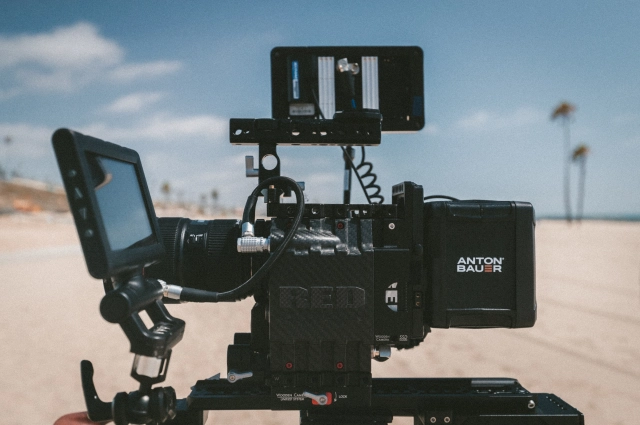Research indicates video marketers get 66% more qualified leads per year. And 50% of marketers say inbound marketing strategies like online forms account for most of their leads. These two digital marketing strategies are effective, but they’re only going to help you with sales lead generation if you have a good system for tracking the data you get out of videos and forms. This article will tell you why data tracking is so important for forms and videos. We’ll also help you determine which types of data you should be tracking to optimize how you generate leads.
Why worry about these types of visitor tracking?
Visitor tracking is always important because it gives you data that can help you make smarter business decisions. Lots of companies track visitor data on their websites. But fewer have dedicated tracking strategies for supplementary marketing tools like videos and web forms.
The data is already there. You just need to figure out how to look at it intelligently. If you can do that, you should be able to significantly improve the effectiveness of your video and form-based marketing campaigns.
How do tracking forms and videos generate leads?
It helps you understand which parts of your content are underperforming
We tend to think of marketing content as binary: it either works or it doesn’t. But that’s rarely the best strategy.
It’s often the case that some parts of your marketing content work well, and others are falling flat. So you don’t necessarily have to scrap underperforming content entirely; you may just need to emphasize what works well and fix what doesn’t.
The only way to do this with your forms and videos is to track their generated data. You need that insight to figure out what changes are necessary to optimize the content so you can generate leads more efficiently.
It guides you toward more efficient budget allocation
Companies only have a certain amount of money they can spend on marketing. They want to make sure that this budget is allocated to the strategies that generate the best ROI.
Tracking data from videos and forms makes this much easier for these types of content. Doing so will tell you exactly where your limited budget will have the biggest impact.
It lets you know what you should be making more of
When you track this type of data, you can also see which types of content your audience cares most about. That gives you great insight into the type of marketing content that you should make next.
It helps you create warmer leads
All in, video and form tracking help you understand your audience better. You can use that information to create more compelling offerings for them. And that’s going to help you create warmer leads who need less pushing to convert.

The most important video metrics to track for sales lead generation
View count
View count is typically the first metric that comes to mind for videos because it gives you a great sense of the overall interest level in the content you created.
Tracking your view count across multiple videos can be especially helpful. You can easily compare the relative interest levels in different types of content.
With that information, you can get a great sense of how you need to format future videos to give them the best chance of succeeding.
Play rate
Play rate is super important to measure when embedding video on landing pages. This metric tells you how many people both saw the video on the landing page and decided to click play on it.
If your play rate on a certain landing page is low, you know that you’ve got one of two problems:
- The thumbnail, video title, and video description weren’t very compelling
- You placed the video somewhere on your landing page that was hard to spot
Watch time
Watch time is great because it offers insight into how well your content resonates with viewers. That tells you something different than play rate or view count.
For instance, you could have a video with many views but a low watch time level. That would indicate you’re grabbing your audience’s attention but struggling to hold it. You would need to improve the quality of your content to fix this problem – not how you package it on a surface level.
The opposite could also be true. You might have a video with a low view count but a high watch-time level. This would show that your content is solid, but that you’re not marketing it compellingly.
Click-through rate
Click-through rate is a good metric to track if you have a CTA at the end of your videos. This metric tells you the percentage of people who took the specific action you wanted them to take after completing your video.
If your click-through rate is low, you have two options: Try a different CTA, or change the focus of the content so it better reflects your audience’s needs.
The most important form metrics to track for lead gen
Completion rate
Your form completion rate tells you the number of people who filled out your form compared to the number of people who saw it.
This is a good baseline metric for getting a sense of how relevant your forms are to your audience’s interests. But a low completion rate could be a sign of several things, including:
- Poor form placement
- Asking for too much information
- Using a poor or irrelevant enticement to get your audience to fill out the form
You’ll want to pair this metric with at least one or two additional ones. Otherwise, it will be tough to understand exactly what’s causing your low completion rate.
Average time taken
The average time taken is a metric that tells you how long it takes the average user to fill out your form. This allows you to know the type of time commitment you’re asking for from your target audience.
If your average time taken is high, that could be a sign your form has too many fields. Or that it prompts users to fill in their information in a way that isn’t entirely clear.
Percentage of ‘save clicks’
Tracking your percentage of save clicks will tell you how many people saved your form with the intent of coming back to complete it later.
You want to keep an eye on this information because it gives you an idea of how complex your form is for the average user to fill out. If your percentage of save clicks for a certain form is high, that can be a sign you’re asking for too much information.
You can fix this problem by:
- Telling your audience all of the information you’re going to ask for upfront
- Collecting less information in the form
- Looking for other opportunities to reduce the amount of time it takes for a user to complete your form
The field where respondents most commonly abandon the form
Give each field of your form its HTML. You make it easy to see where respondents are leaving the form most often. This can help you figure out what you need to change to improve your completion rate.
You might realize that one field asks for information that many of your audience members aren’t willing to share. Simply removing that part of the form could be all you need to boost your conversions and generate more leads.

Leadlander makes it easier to take advantage of the benefits of visitor tracking
Visitor tracking on forms, videos, and your website helps you learn about your audience and improve your sales lead generation. LeadLander’s website visitor tracking software makes it easy to take advantage of this.
Our platform provides you with a wealth of information about:
- Who’s visiting your site
- How they’re accessing it
- What they’re doing while on it
With that information, you can improve your site, create more compelling content, and optimize how you reach out to your target audience.
Sign up for a free 14-day trial of LeadLander today to directly experience our value.
Related Reading


